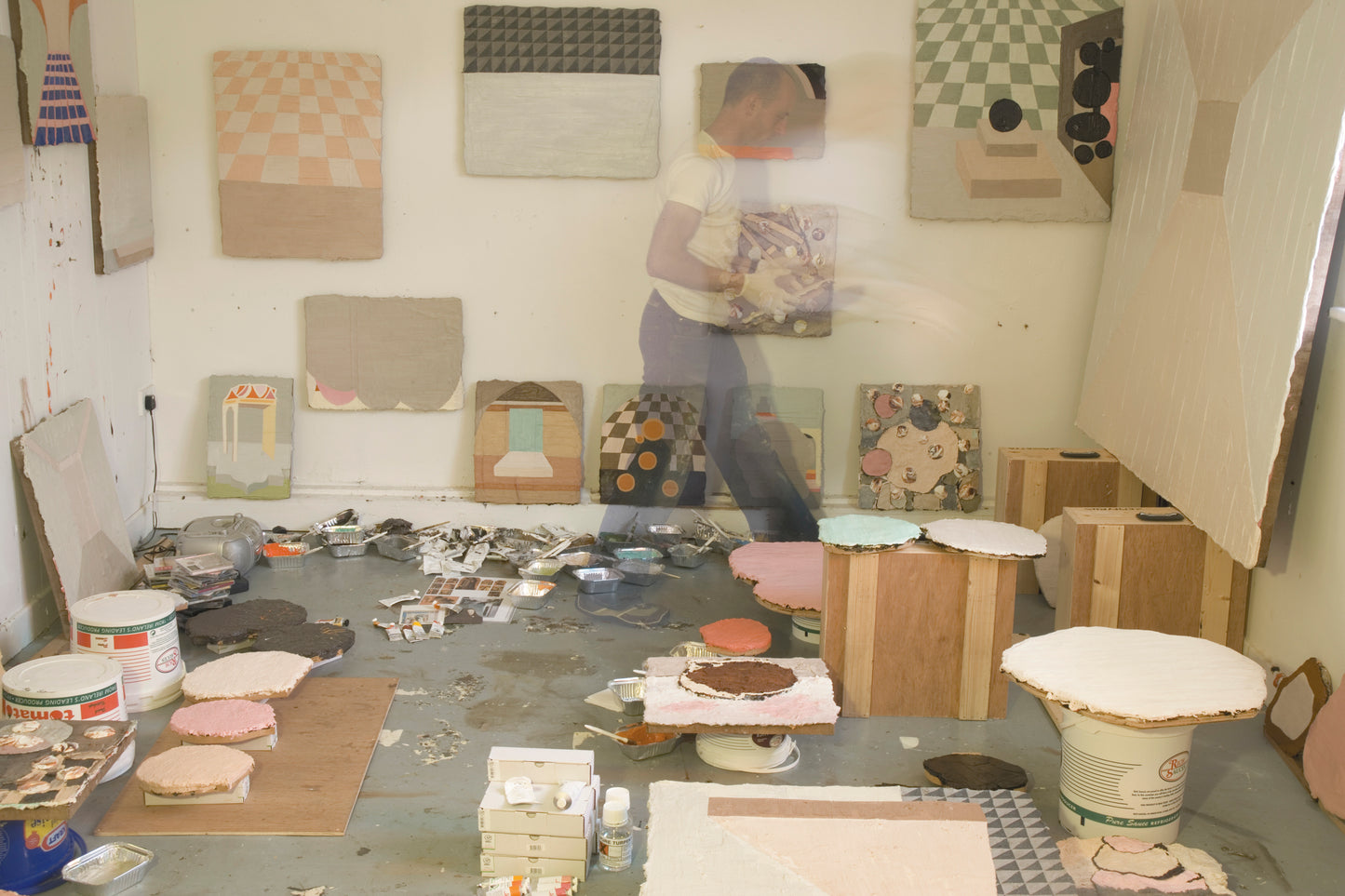Gandon Editions
Profile °24 – PAUL DORAN
Profile °24 – PAUL DORAN
Couldn't load pickup availability
Share
essays by Robbie O’Halloran, Sally O’Reilly; interview by Mark Swords
ISBN 978 0948037 306 84 pages (paperback) 22.5x22.5cm 63 illus
This book is a retrospective look at the work of the painter Paul Doran, winner of the AIB Art Prize. It features and in-depth essay and extensive interview with the artist.
EXTRACTS
"The marks and gestures which began to accumulate on the surfaces of Doran’s earlier paintings, and which not just embellished but complicated those surfaces, are carried through in the latest works also. This time, however, it is of a much more controlled and sophisticated order. Organic blotches, seeping paint from underneath their edges, lie ominously on the surface, in relief, like a fungus, threatening to take over the entire painting. There are other, more geometric elements which appear on the surfaces also, as though cut and pasted from other works. They are spliced and literally grafted, in areas crossing over and under each other. The intricacy of these elements, in sometimes awkward juxtaposition, resists the matter-of-fact reading afforded to artwork which rests on the evidence of the medium alone. The space of these paintings is difficult and multi-layered. Opaque physicality, in the form of superimposed marks, is set in relief against flat perspective devices which only appear to recede into the surface of the painting. These works, informed as they are by both the historical and the contemporary, attest to the complexity of the painted surface and to our inability to provide it with any totalising response."
— from the introduction by Robbie O’Halloran
"If we look at the work of the most influential metaphysical painter of the last century, Giorgio de Chirico, we find strange interlopers reminiscent of Doran’s eggy blobs: corporeal suns have strayed into the logical framework of architecture, appearing in rooms or on a beach, replicated either side of a horizon. Throughout De Chirico’s paintings, familiar objects are uprooted from their habitual contexts to assume symbolic import. They are arranged in odd worlds without rules, in non-specific places like shorelines, piazzas, valleys and generic architectural enclosures, in enigmatic, melancholic or prophetic still lifes. De Chirico’s orchestration of a tension between the real and the metaphysical finds an equivalence in Doran’s infection of geometry with biology, the optic with the haptic, and the static with the moving. De Chirico’s intention was to formulate a metaphysical version of mnemonic systems – memory aids that rely on association and substitution – which served to retrieve the past and its images. Memory and perception, mimesis and reality, like the present and the past, will always be at one remove from one another, but are associative.
Doran’s geometry, so frail and flawed, is like a badly remembered event or place, pieced together from different perspectives that don’t quite match up to a solid account; his bridges to the real and the past are very rickety. His spaces, like De Chirico’s temples, beach huts and puppet theatres, are emptied of humans. They are portentous, preternatural even. They suggest potential rather than the past, something about to occur, a memory about to be formed. The act of remembering and the act of theatre seem associated, as they both strive to create something from nothing."
— from the essay by Sally O’Reilly
"When I did the first show in the Green On Red Gallery [2002], people were coming in and looking at the paintings in shock and excitement. I think they were asking themselves, ‘How is all that paint staying there?’ Physically, the paintings weren’t a lot different from the MA show. You could say they were more confident. There was even more of a virtuosity about them. They were riskier in the way that they used colour. There were two pieces in the 2004 show that were made of pure lumps of paint. So there was certainly a confidence appearing in the work from that point of view, but I think there was still a novelty factor.
I’ve no doubt that the first time I saw a Jason Martin or a Zebedee Jones, they were extremely novel to me. They were so odd-looking. I hadn’t seen anything else like them before. The same occurred when I saw an Alexis Harding or a Michael Raedecker, although maybe in a less aggressive way. All of that work has something distinctly different or odd about it – physically, in the way they are actually put together. There’s always a novelty factor. I’m sure it was the same with those early Gary Hume paintings. It’s the same with a lot of painting, I think. I don’t know how you can avoid that initially, and I don’t know that it’s a bad thing. Okay, if it’s the only thing that people are engaging with, I think that would be problematic. I don’t know any painters that make work for the novelty factor, but I think that after a point it became a concern for me because sometimes it was difficult for people to get past that ‘difference’."
— Paul Doran in conversation with Mark Swords
|
CONTENTS CRITICAL MASS essay by Robbie O’Halloran 6-9 CIRCLING THE SQUARE essay by Sally O’Reilly 10-15 A CONVERSATION WITH THE ARTIST interview by Mark Swords 16-22 COLOUR PLATES 23-77 LIst of illustrations / Artist’s biography |
While some people respond to awards [Doran is an AIB Art Prize award-winner] by repeating the winning formula or variations on its theme for years, there is little danger of that happening with Doran and there have been radical changes in his work over the last year ... Gandon’s Profile on Paul Doran reproduces over fifty paintings in full colour plates which give you a good idea of his work and its development from 1999 to 2006 (and, incidently, good colour reproductions of the subtleties of paintings is very tricky to accomplish, but Gandon always takes great care to do so). — Marianne Hartigan, Books Ireland
















